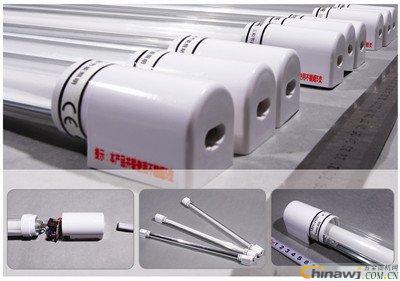On March 13, 2013, Yuanfang Optoelectronics, an LED equipment inspection company, released a revised earnings forecast for the first quarter of 2013. The company lowered its projected net profit from an initial range of 5% to 35% to a new range of 30% to 60%. This revision came alongside the release of its annual report, which showed a decline in both revenue and net profit for fiscal 2012. Revenue fell by 11.45% year-on-year to 182 million yuan, while net profit dropped by 25.07% to 72.48 million yuan.
This downturn was not isolated to Yuanfang Optoelectronics. Many other companies within the LED industry, especially those in the upstream segment such as Huacan Optoelectronics, Silan Micro, Ganzhao Optoelectronics, and Dehao Runda, also experienced significant declines in net profits—ranging from 30.38% to 88.07%. Fujing Technology, a supplier of LED crystal materials, saw its net profit drop by 34.12%, while Moso Power, a manufacturer of LED power supplies, reported a 9.76% decrease. Keheng Shares, another key player in the LED luminescent materials sector, faced a staggering 80.62% fall in profits. Packaging companies like Changfang Lighting, Lehman Optoelectronics, Hongli Optoelectronics, and Guoxing Optoelectronics also struggled, with net profits declining by 27.45% to 66.45%.
The challenges faced by these companies are part of a broader trend in the LED industry. Over the past few years, the sector has attracted substantial investment due to its role in energy conservation and environmental protection. As more Chinese companies entered the market, the supply of LED products outpaced demand, leading to a sharp drop in sales. Additionally, international trade barriers have made exporting LED lighting products more difficult. According to officials from the Fuzhou Inspection and Quarantine Bureau, many countries have raised the standards for imported LED lights, increasing compliance costs and complicating export efforts.
Jiuzhou Optoelectronics’ General Manager Xie Yongjun attributed the overall profit decline to overinvestment in the LED sector, particularly between 2009 and 2010. This surge in capital led to market saturation. He also noted that some manufacturers cut corners on quality, resulting in subpar LED lamps that failed to meet consumer expectations, even though their prices were lower than traditional energy-saving lamps.
To counter this, many LED companies turned to exports. However, stricter regulations in foreign markets have made this path more challenging. For instance, starting in September 2013, the EU implemented stricter ecological design requirements for directional lights and LED products, including higher energy efficiency standards—some up to 2.5 times higher than before. In February 2013, all lamps exported to the EU had to pass additional electromagnetic field (EMF) tests. Meanwhile, Mexico introduced a new mandatory standard for LED lamps in May 2013, requiring outdoor LED luminaires to meet strict energy efficiency, power factor, and harmonic distortion limits.
In response to these challenges, Sanhe Energy Saving, a producer of tube-in-tube energy-saving lamps, emphasized its commitment to high-quality, cost-effective products. The company claims its energy-saving tubes feature a power factor of at least 0.95 and total harmonic distortion below 15%, without needing third-party verification. With strong after-sales support, Sanhe has positioned itself as a leader in the energy-saving lighting transformation movement.

Bidet Seat
A bidet seat is a bathroom accessory that is designed to enhance personal hygiene and comfort. It is a seat-like attachment that can be installed on a standard toilet, replacing the existing toilet seat. A bidet seat is equipped with various features and functions to provide a more thorough and convenient cleansing experience.
The primary purpose of a Smart Toilet seat is to provide gentle and effective cleansing after using the toilet. It uses water jets to spray a controlled stream of water onto the user's intimate areas, replacing the need for traditional toilet paper. This not only ensures a more hygienic clean but also reduces irritation and discomfort associated with wiping.
Smart bidet seats often come with adjustable water pressure and temperature settings, allowing users to personalize their cleansing experience according to their preferences. Some models may also offer additional features such as oscillating or pulsating spray modes for a more comprehensive clean.
In addition to cleansing, bidet seats may offer additional functionalities for enhanced comfort. Many models are equipped with a heated seat, providing warmth and comfort during colder seasons. Some bidet seats also feature air dryers that eliminate the need for toilet paper altogether, further reducing waste and promoting environmental sustainability.
The installation of a bidet seat is typically straightforward, requiring only basic plumbing skills. Most bidet seats can be easily attached to the existing toilet bowl using mounting brackets and connecting hoses. Some models may require access to a nearby electrical outlet for certain features like seat heating or air drying.
Bidet Seat,Toilet Seat Cover,Bidet Toilet Seats,Toilet Seat, Smart Toilet Seat
Guangdong Fabia Intelligent Technology Co., Ltd , https://www.smartfabiatoilet.com
